Ichthydium (F. ) forficula
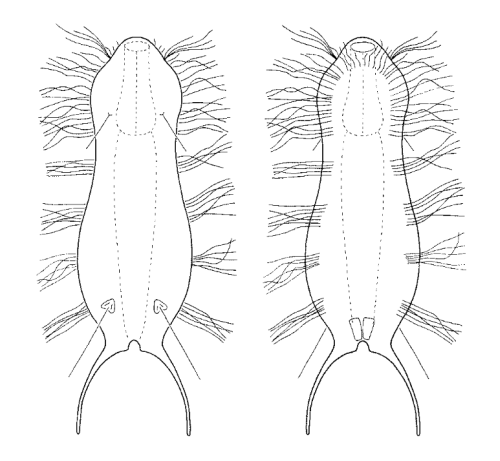
160 µm - 170 µm
Width:
28 µm - 32 µm
Width of the head ( five-lobed ):
22 µm - 25 µm
Width of the neck:
16 µm - 19 µm
Length of the furca:
Adhessive tubes (thin, pointed):
75% of furca
Pharyx ( Very narrow ):
35 µm - 38 µm
Diameter of the mouth ( around ):
unknown
Dorsal scales:
none, posterior setula on papilla
Ventral scales:
none
Oecology:
Bog, on mud
Similar species:
Ichthydium monolobum was included in this species
Particularities:
Very characteristic furca
The species I. (F.) forficula was united some time ago with the somewhat smaller species I. monolobum into a single species. A main characteristic of this species are the long, curved and thin glue tubes, which give the animals a “tweezer-like” appearance:
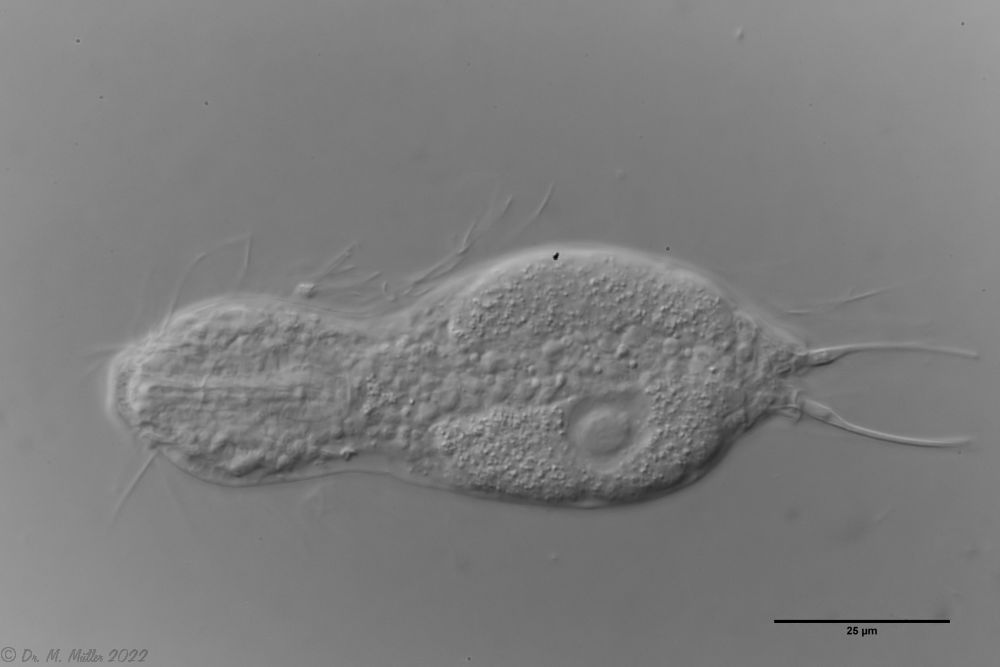
I. forficula: dorsal with pincer-like adhesive tubes
On the ventral side the animal carries two distinct terminal plates.
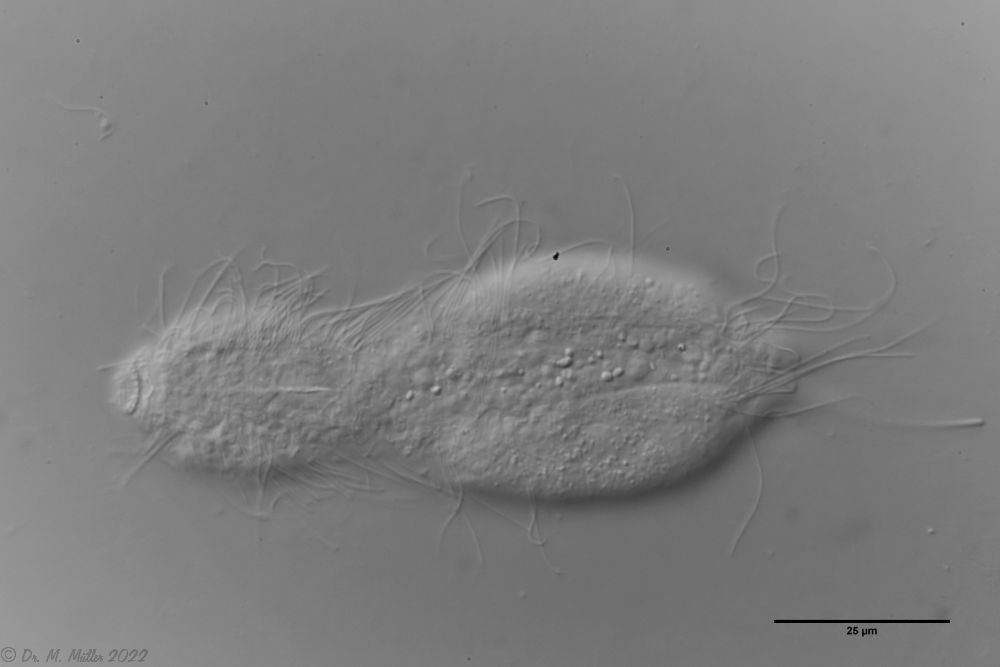
I. forficula: ventrale Terminalplatten
The lash bands are broken up into individual clumps of extremely long lashes.
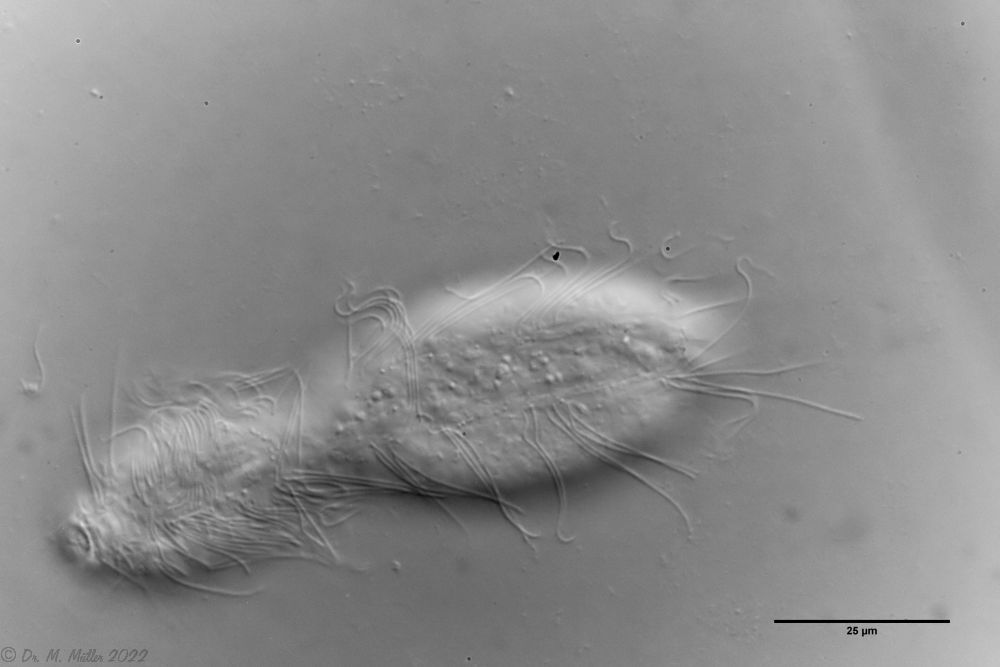
I. forficula: Ciliate tuft
In the side view, you can see the enormous length of the locomotive eyelashes:
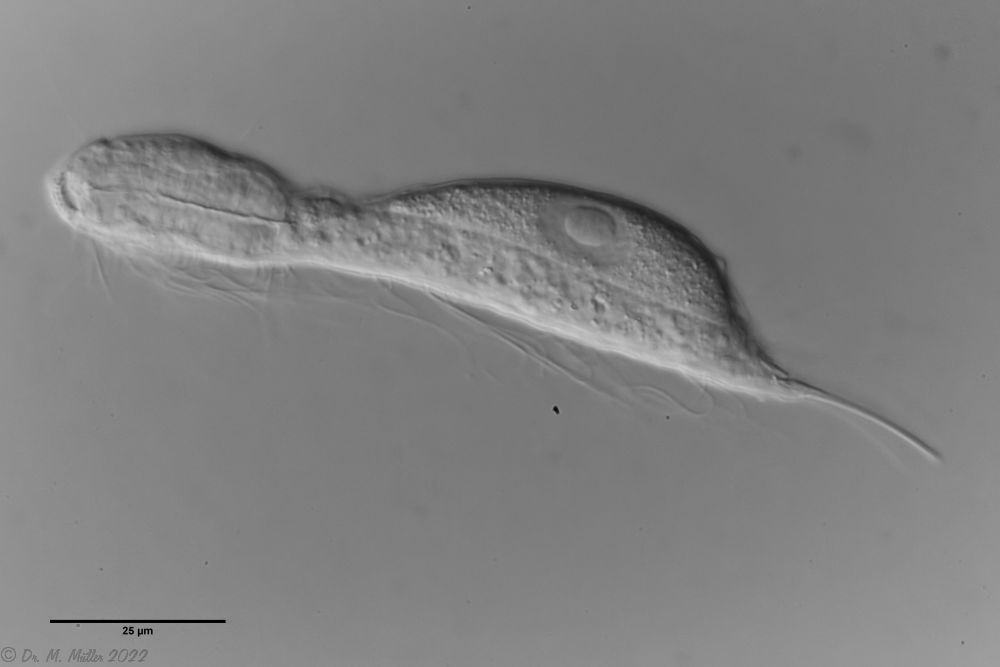
I. forficula: Side view
The posterior tactile hairs are on a papilla:

I. forficula: tactile hair on papilla